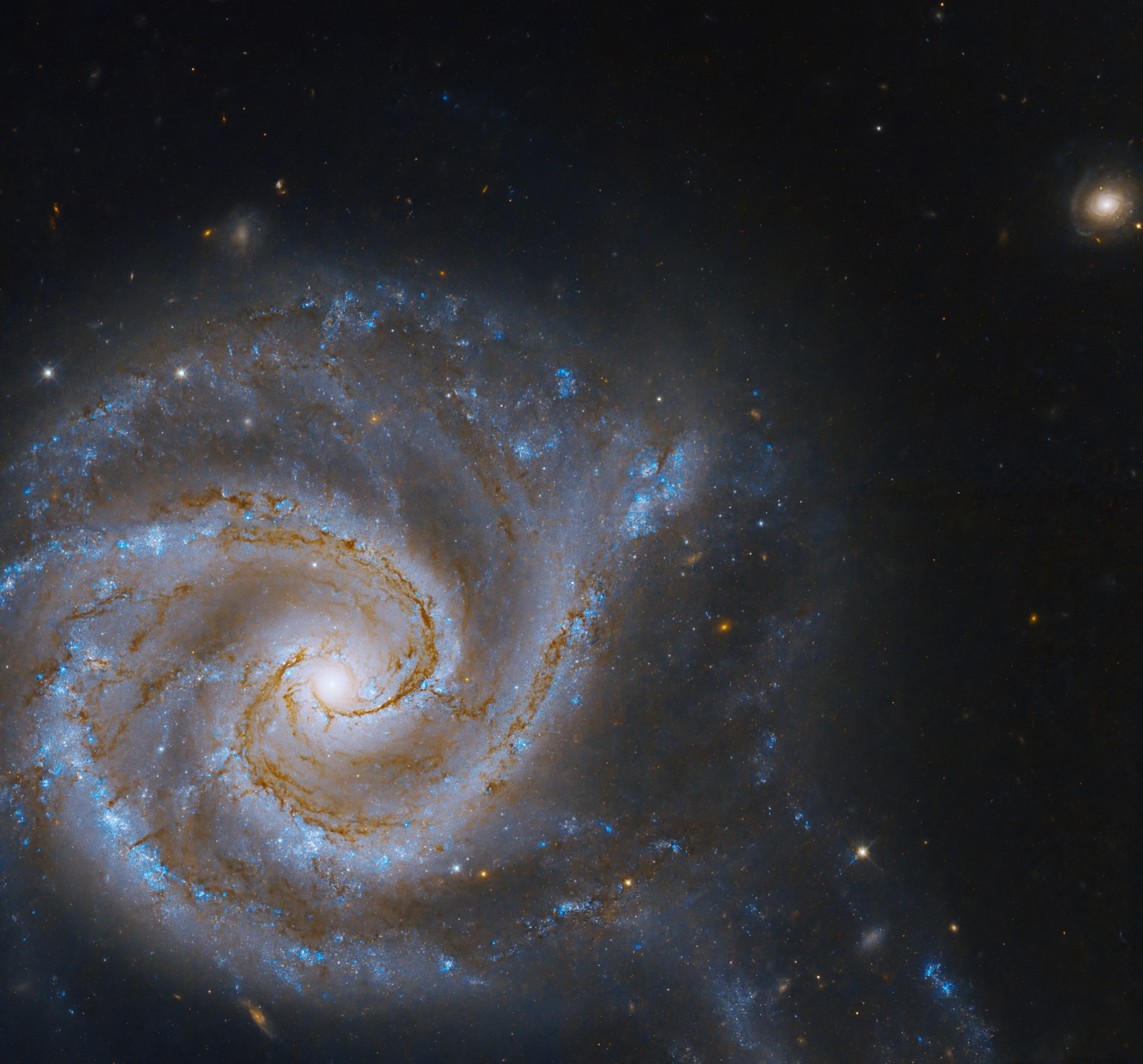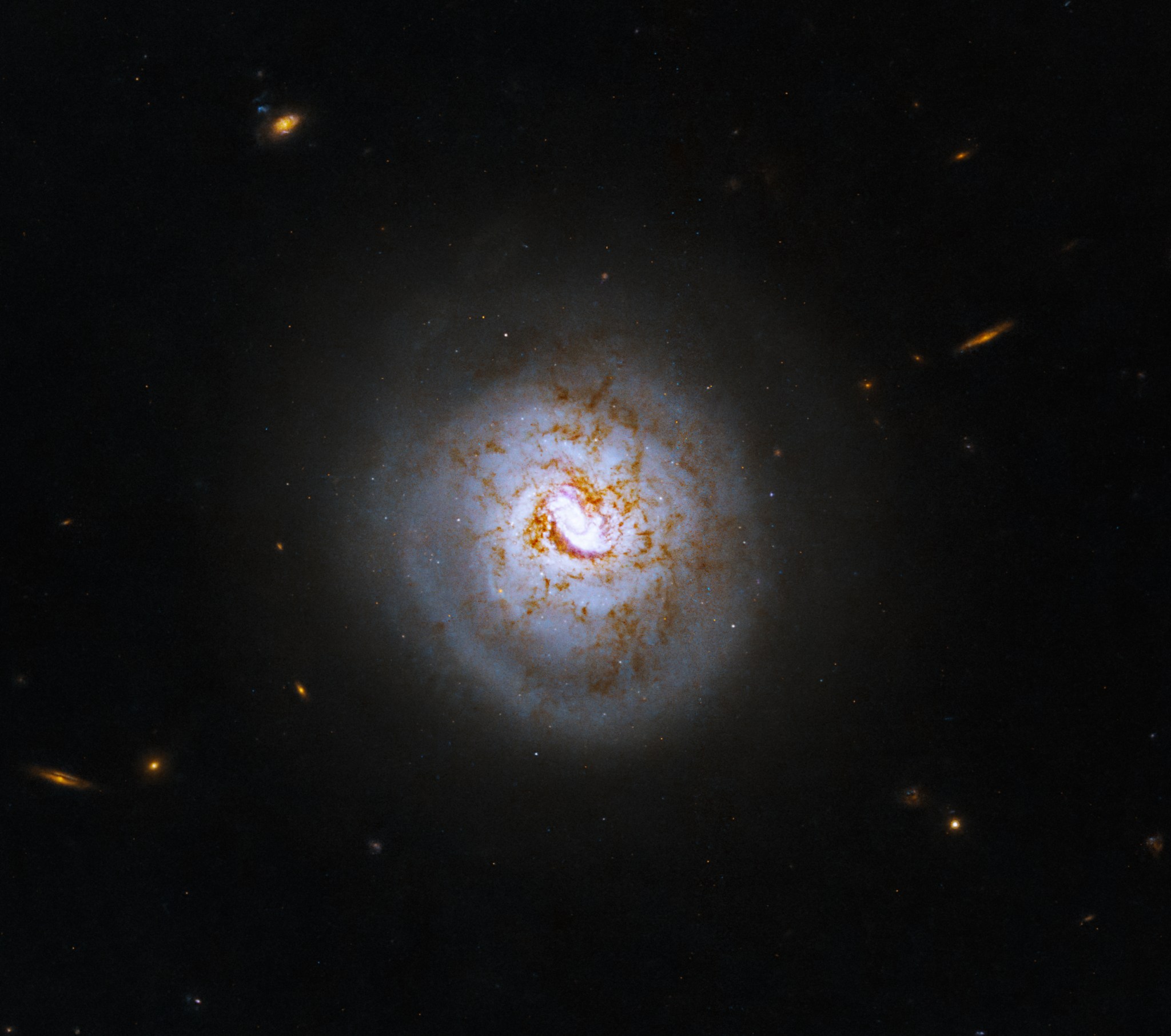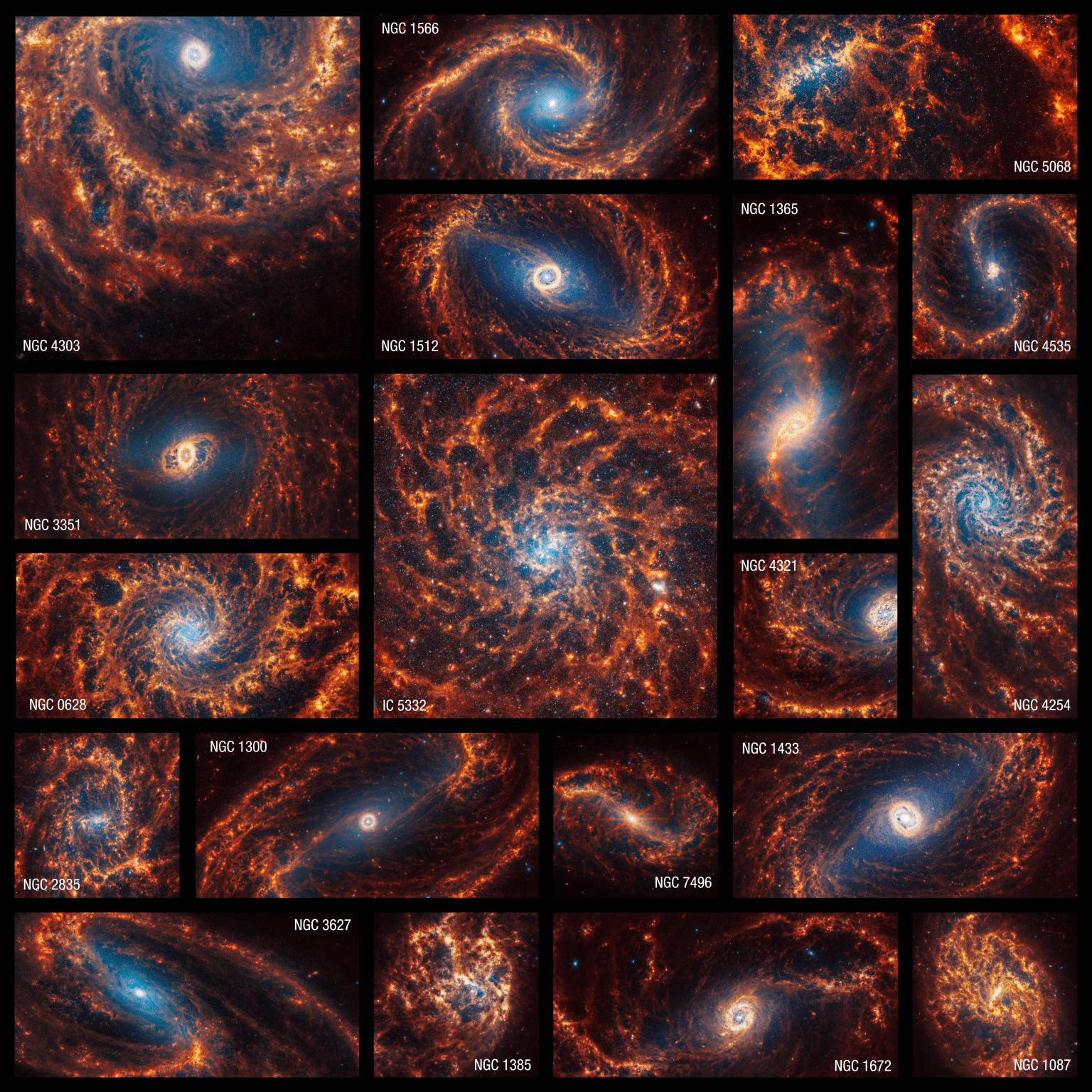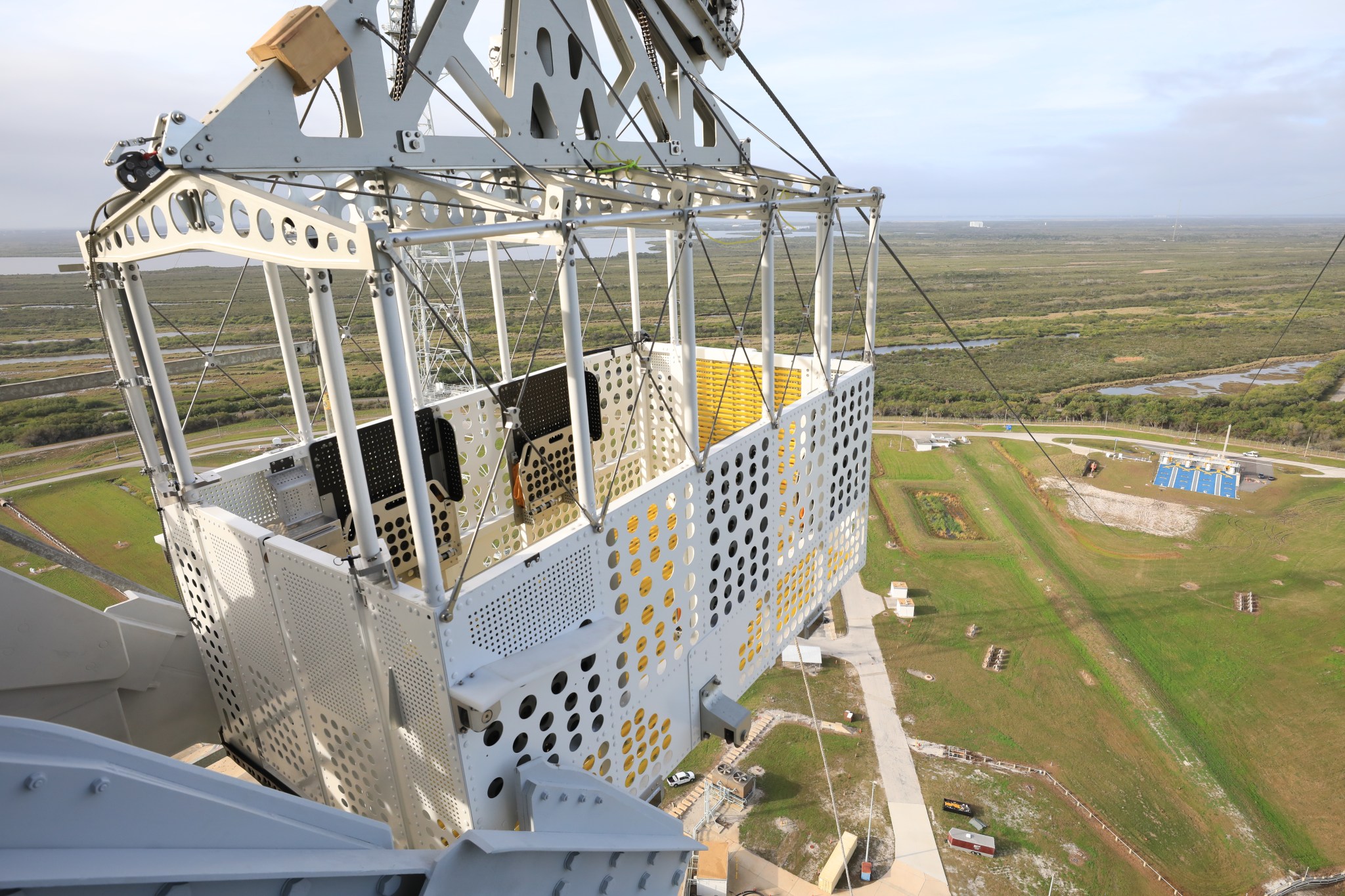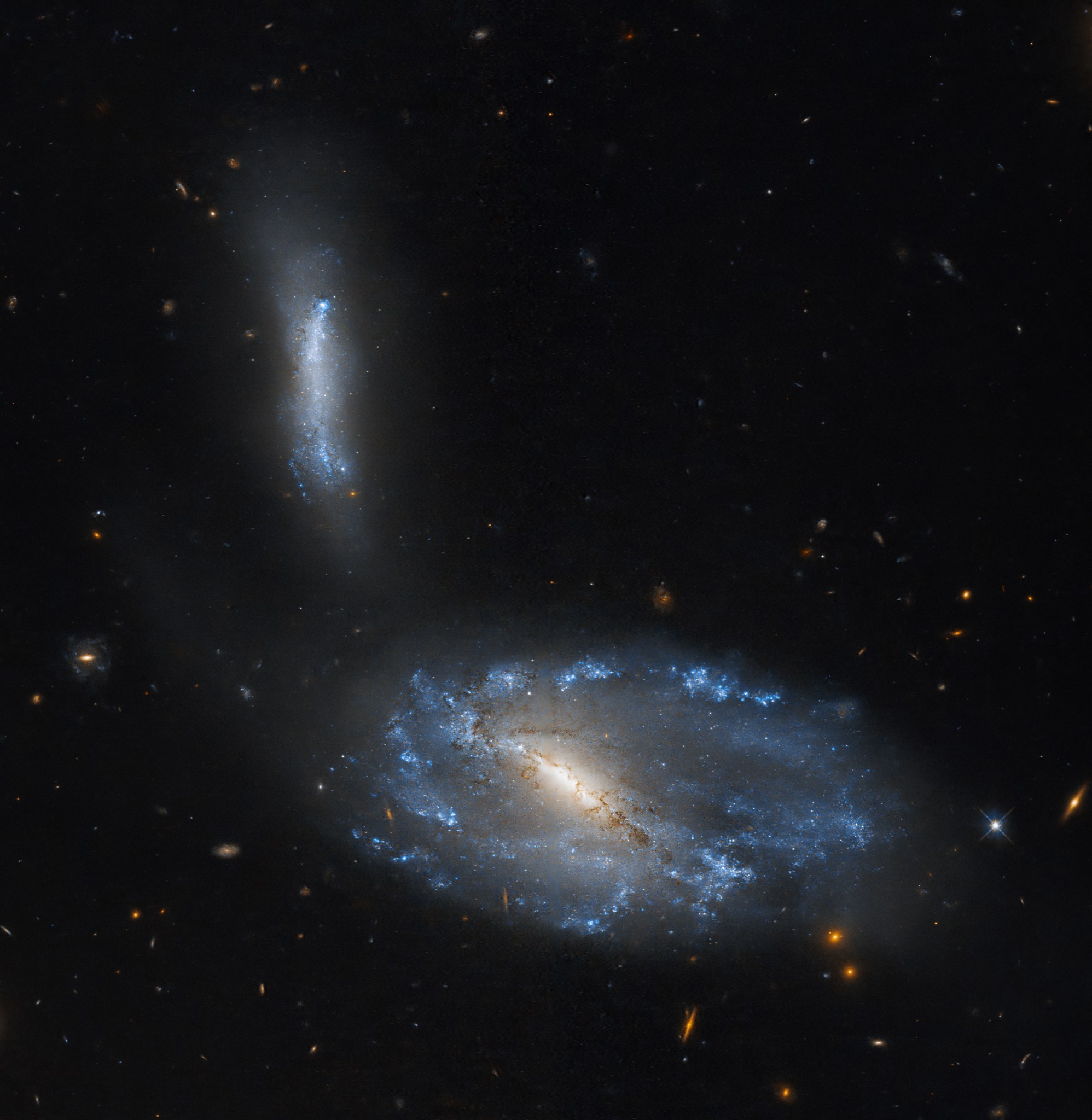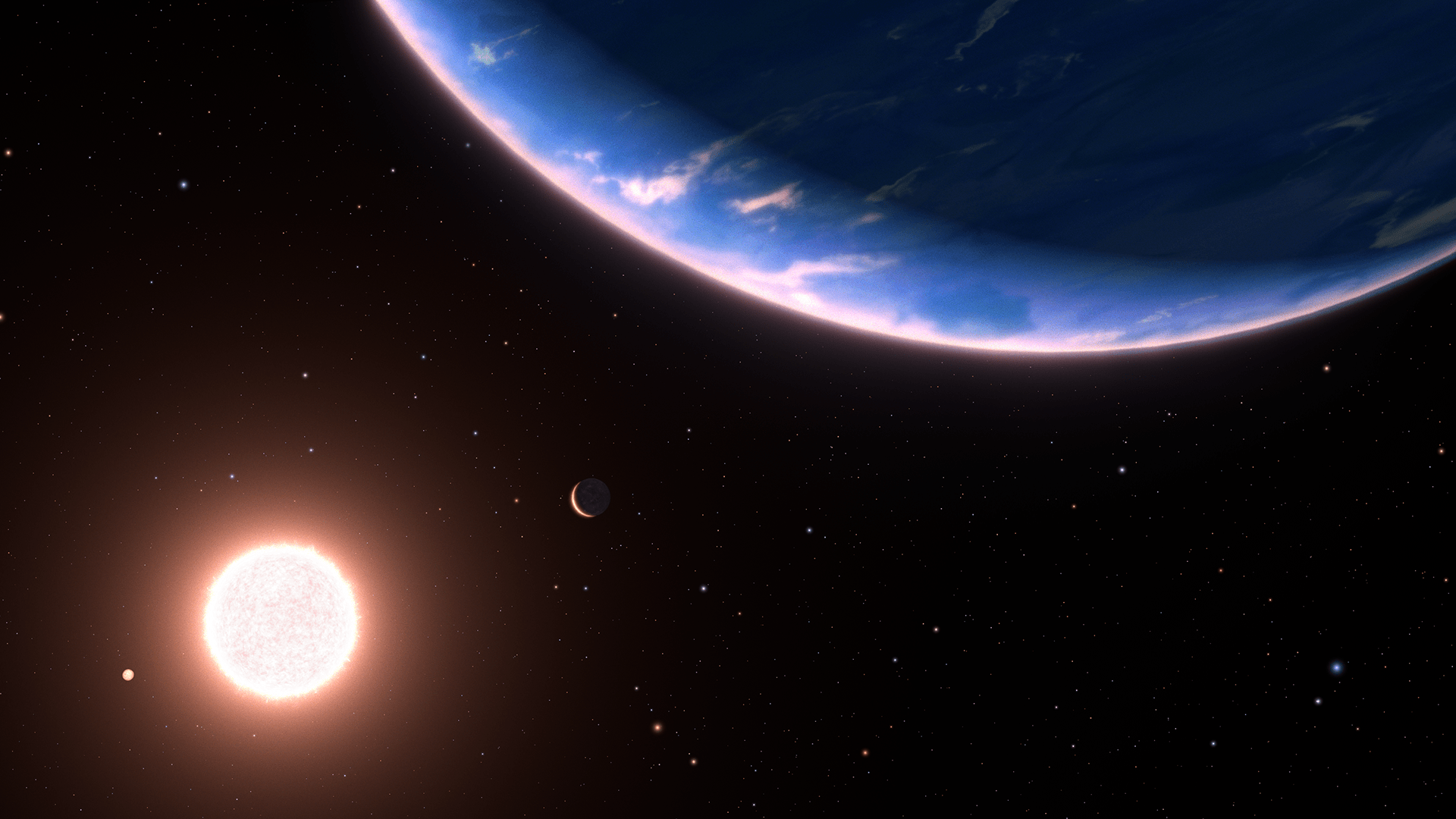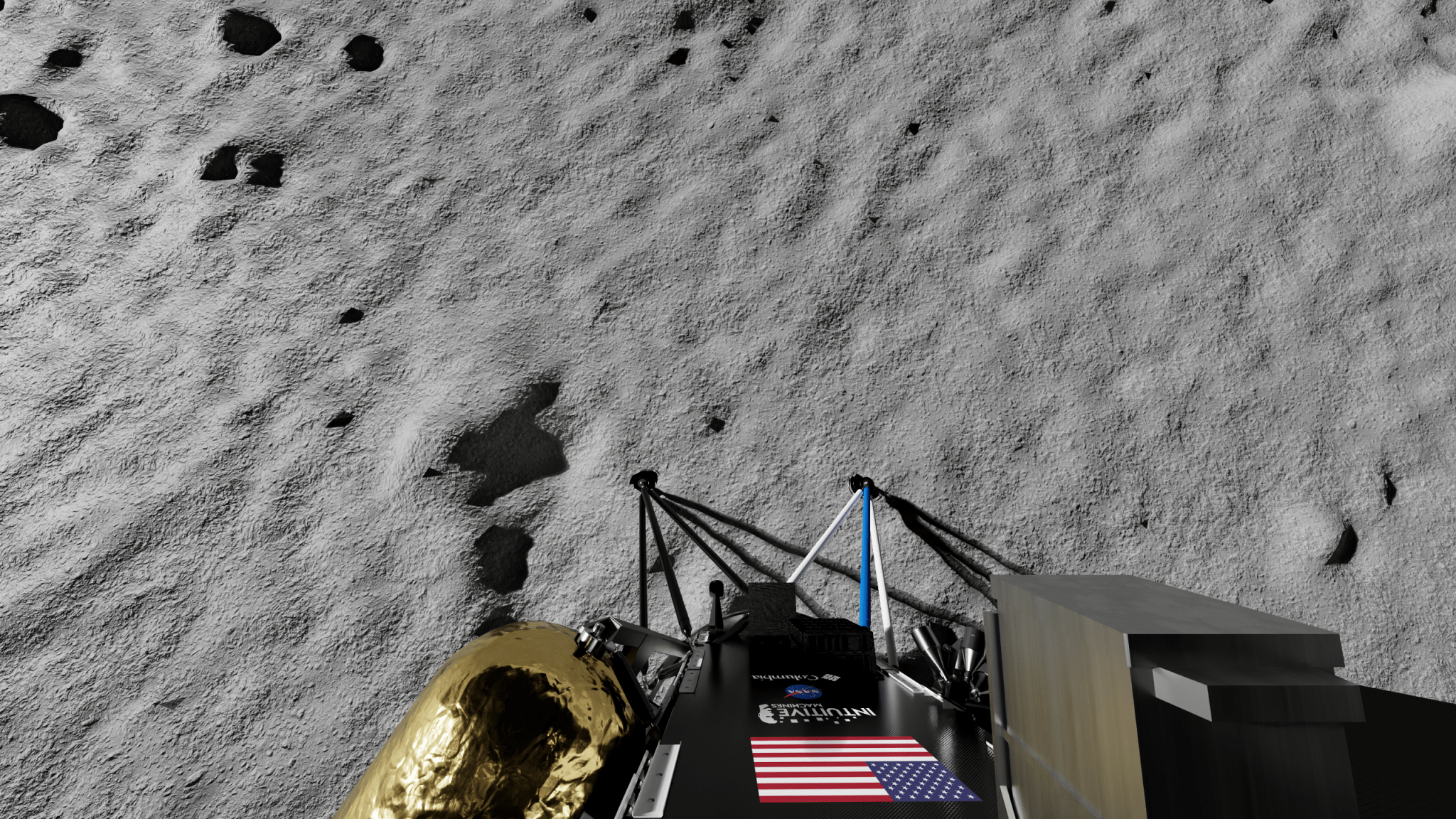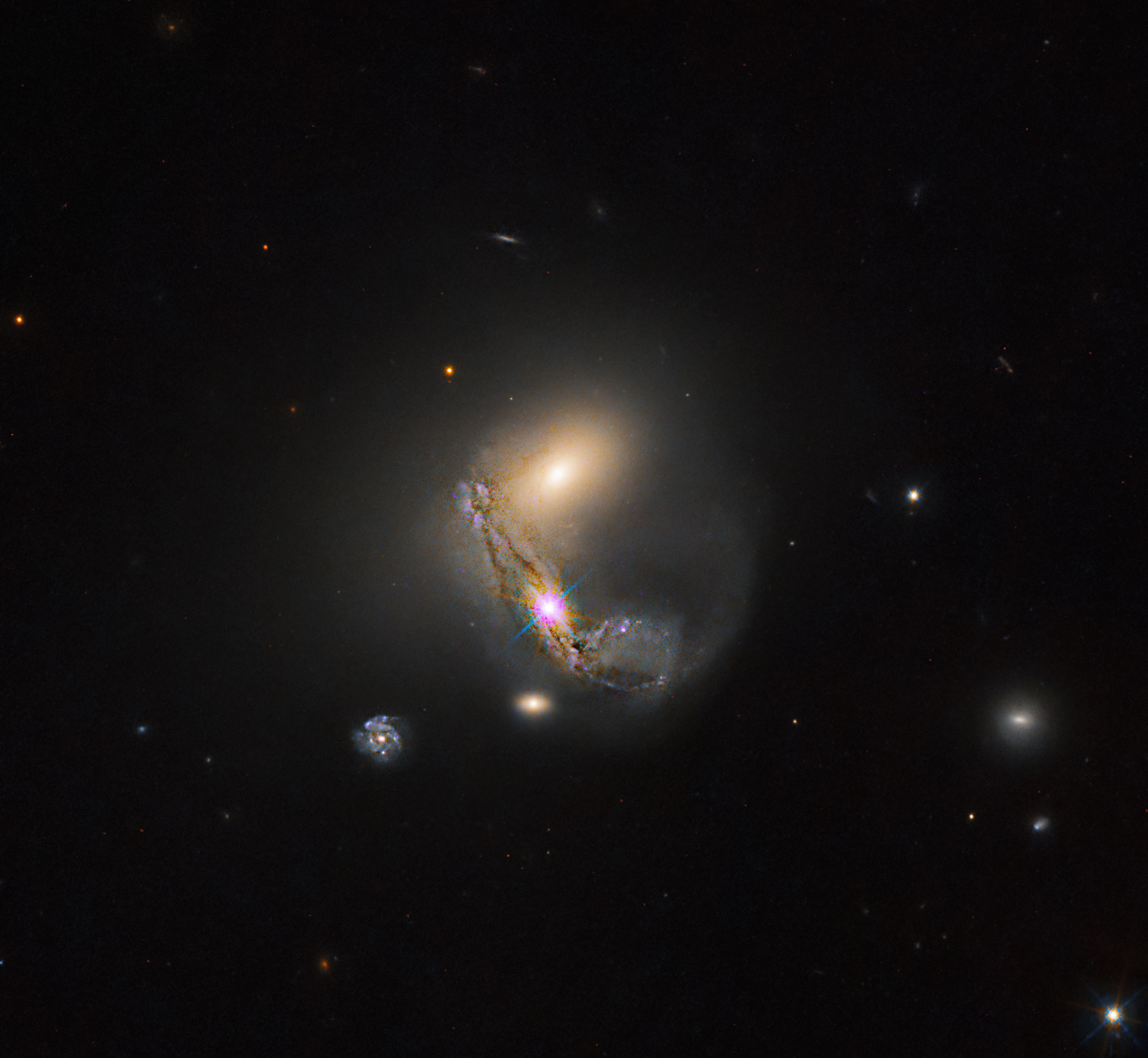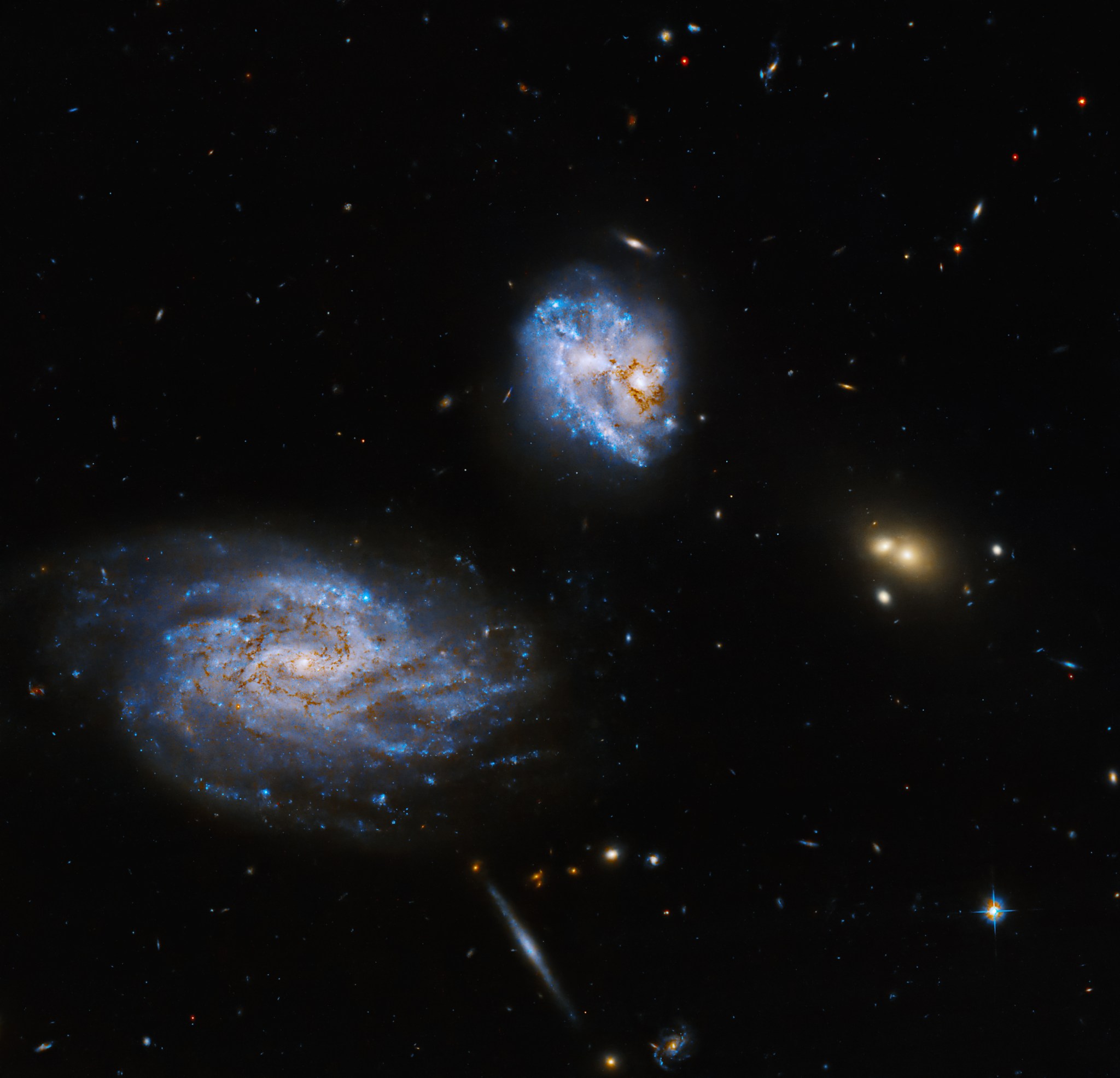Official NASA’s SpaceX Crew-9 portraits with Zena Cardman, Nick Hague, Stephanie Wilson and Aleksandr Gorbunov NASA As part of NASA’s SpaceX Crew-9 mission, four crew members are preparing to launch to the International Space Station and conduct a wide-ranging set of operational and research activities for the benefit of all. Launching aboard the Dragon spacecraft, NASA astronauts Commander Zena Cardman, Pilot Nick Hague, and Mission Specialist Stephanie Wilson, and Roscosmos cosmonaut Mission Specialist Aleksandr Gorbunov, will join Expedition 71 and 72 crew members no earlier than August. They will arrive…
Read MoreTag: Missions
Hubble Observes a Galactic Distortion
1 min read Hubble Observes a Galactic Distortion The galaxy NGC 5427 shines in this new NASA Hubble Space Telescope image. NASA, ESA, and R. Foley (University of California – Santa Cruz); Processing: Gladys Kober (NASA/Catholic University of America) The galaxy NGC 5427 shines in this new NASA Hubble Space Telescope image. It’s part of the galaxy pair Arp 271, and its companion NGC 5426 is located below this galaxy and outside of this image’s frame. However, the effects of the pair’s gravitational attraction is visible in the galactic distortion…
Read MoreHubble Spies a Spinning Spiral
2 min read Hubble Spies a Spinning Spiral This new NASA Hubble Space Telescope image features the face-on spiral and Seyfert galaxy, ESO 420-G013. NASA/ESA/A. Evans (University of Virginia)/Processing: Gladys Kober (NASA/Catholic University of America) Looking like a baseball lobbed into the depths of the universe, ESO 420-G013 is a face-on spiral galaxy and a Seyfert galaxy. Dark lanes of dust are visible against the background glow of the galaxy’s many stars. About 10 percent of all the galaxies in the universe are thought to be Seyfert galaxies. They are…
Read MoreNASA’s Webb Depicts Staggering Structure in 19 Nearby Spiral Galaxies
6 Min Read NASA’s Webb Depicts Staggering Structure in 19 Nearby Spiral Galaxies Webb’s set of 19 PHANGS images of face-on spiral galaxies. Credits: NASA, ESA, CSA, STScI, Janice Lee (STScI), Thomas Williams (Oxford), and the PHANGS team It’s oh-so-easy to be absolutely mesmerized by these spiral galaxies. Follow their clearly defined arms, which are brimming with stars, to their centers, where there may be old star clusters and – sometimes – active supermassive black holes. Only NASA’s James Webb Space Telescope can deliver highly detailed scenes of nearby galaxies…
Read MoreArtemis Teams Install Emergency Escape Baskets at NASA Kennedy
Teams with NASA’s Exploration Ground Systems Program began installing the four emergency egress baskets at Launch Pad 39B in preparation for NASA’s Artemis II crewed mission at the agency’s Kennedy Space Center in Florida. In the event of an emergency at the pad during the launch countdown, these baskets, similar to gondolas on ski lifts, will take the astronauts and pad personnel safely from the mobile launcher to the base of the pad where emergency transport vehicles will drive them away. Following installation, teams will thoroughly test the baskets by…
Read MoreHubble Studies a Sparkling Galaxy Pair
1 min read Hubble Studies a Sparkling Galaxy Pair This new NASA Hubble Space Telescope image features a pair of interacting galaxies called, NGC 5410 and UGC 8932/PGC 49896. NASA/ESA/D. Bowen (Princeton University)/Processing: Gladys Kober (NASA/Catholic University of America) A pair of small, interacting galaxies shine in this new NASA Hubble Space Telescope image. The larger of the two galaxies is named NGC 5410 and was discovered in 1787 by British astronomer William Herschel. It spans 80,000 light-years across and has a bright white bar of stars at its center.…
Read MoreNASA’s Hubble Finds Water Vapor in Small Exoplanet’s Atmosphere
5 min read NASA’s Hubble Finds Water Vapor in Small Exoplanet’s Atmosphere This is an artist’s concept of the exoplanet GJ 9827d, the smallest exoplanet where water vapor has been detected in the atmosphere. The planet could be an example of potential planets with water-rich atmospheres elsewhere in our galaxy. With only about twice Earth’s diameter, the planet orbits the red dwarf star GJ 9827. Two inner planets in the system are on the left. The background stars are plotted as they would be seen to the unaided eye looking…
Read MoreNASA to Discuss Science, First Intuitive Machines Artemis Moon Flight
This artist’s concept shows Intuitive Machines’ Nova-C lander on the surface of the Moon. This robotic delivery, part of NASA’s CLPS (Commercial Lunar Payload Services) initiative and Artemis campaign, will transport agency science and technology demonstrations to the Moon for the benefit of all. Intuitive Machines NASA will host a media teleconference at 3:30 p.m. EST Wednesday, Jan. 31, to discuss its science and technology demonstrations flying aboard Intuitive Machines’ first flight to the Moon as part of the agency’s CLPS (Commercial Lunar Payload Services) initiative and Artemis campaign. Audio…
Read MoreHubble Glimpses a Bright Galaxy Group
2 min read Hubble Glimpses a Bright Galaxy Group This new NASA Hubble Space Telescope image shows a tangled group of interacting galaxies called LEDA 60847. NASA/ESA/A. Barth (University of California – Irvine)/M. Koss (Eureka Scientific Inc.)/A. Robinson (Rochester Institute of Technology)/Processing: Gladys Kober (NASA/Catholic University of America) This new NASA Hubble Space Telescope image shows a group of interacting galaxies known as LEDA 60847. LEDA 60847 is classified as an active galactic nuclei, or AGN. An AGN has a supermassive black hole in the galaxy’s central region that is…
Read MoreHubble Observes an Askew Galaxy Coaxing Star Formation from its Partner
2 min read Hubble Observes an Askew Galaxy Coaxing Star Formation from its Partner This new NASA Hubble Space Telescope image features two interacting spiral galaxies collectively called Arp 300. NASA, ESA, J. Dalcanton (University of Washington), and R. Windhorst (Arizona State University); Processing: Gladys Kober (NASA/Catholic University of America) Arp 300 consists of two interacting galaxies, UGC 05028 (the smaller face-on spiral galaxy) and UGC 05029 (the larger face-on spiral). Likely due to its gravitational dance with its larger partner, UGC 05028 has an asymmetric, irregular structure, which is…
Read More
